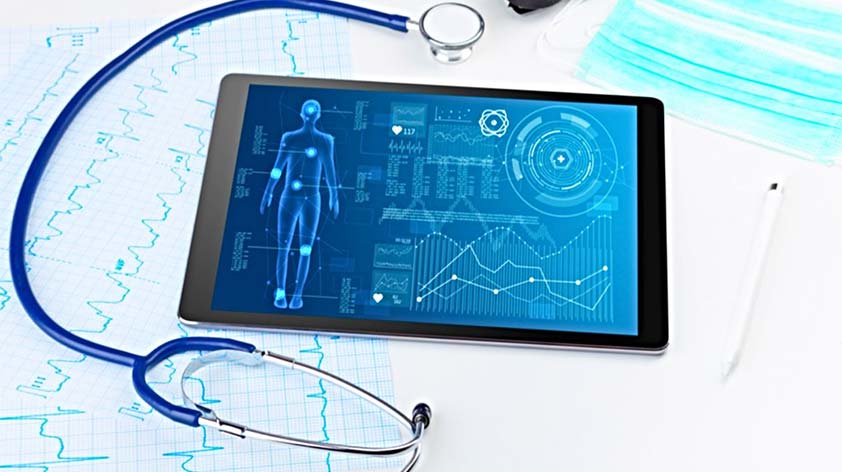
The intersection of technology and public health is creating profound changes in how we approach healthcare. From the way diseases are tracked and managed to how health education is delivered, technology is revolutionizing every facet of public health.
Advancements in digital tools and data analytics are not only enhancing the efficiency of healthcare services but also making them more accessible to a wider population. This article takes a look at the various ways technology is reshaping the public health landscape.
1. Enhanced Disease Surveillance and Reporting
One of the most significant impacts of technology in public health is the enhancement of disease surveillance and reporting systems. Innovative software and digital platforms enable real-time data collection and analysis, which are crucial in the early detection and response to health crises.
These systems can track the spread of diseases, identify outbreak hotspots, and inform public health officials and the public in a timely manner. This rapid dissemination of information is vital in controlling and preventing the spread of infectious diseases, thereby safeguarding public health on a global scale.
2. Telemedicine and Remote Care in Public Health
Telemedicine has revolutionized the way healthcare is delivered, particularly in remote or underserved areas. This technology allows patients to consult with healthcare professionals via video calls, phone calls, or messaging platforms, eliminating the need for physical travel to healthcare facilities.
Remote care technologies have proven especially important when it comes to managing chronic diseases, mental health, and during times when in-person consultations pose risks, such as during pandemics. By bridging the distance between patients and providers, telemedicine ensures continuous, accessible, and convenient healthcare services.
3. Education and Training
Technological advancements have also transformed education and training in public health. The emergence of online learning platforms has made education more accessible and flexible. An online public health certificate program, for example, allows individuals to gain essential knowledge and skills in public health from anywhere in the world.
These programs cater to a diverse range of learners, from public health professionals looking to advance their careers to individuals seeking to enter the field. The flexibility and accessibility of online education are empowering a new generation of public health professionals.
4. Big Data and Healthcare Analytics
Big data is playing a pivotal role in transforming healthcare analytics. The ability to process and analyze vast amounts of data is aiding in predictive modeling, resource allocation, and personalized medicine.
Healthcare providers can use big data to identify patterns and trends in diseases, patient outcomes, and health behaviors, leading to more informed decision-making. This data-driven approach is enhancing the effectiveness of public health interventions and policies, ultimately leading to improved health outcomes.
5. Mobile Health Apps and Wearables
The surge in mobile health apps and wearable technology is a testament to how personal health monitoring is becoming increasingly mainstream.
These technologies allow individuals to track various health metrics such as physical activity, heart and breath rate, and sleep patterns. Wearables and health apps are empowering people to take charge of their health by providing them with actionable insights and encouraging healthier lifestyles.
The data collected from these devices can be invaluable for healthcare providers in monitoring patient health and tailoring treatment plans.
6. Improved Health Diagnostic Tools
Technological innovation has led to significant advancements in diagnostic tools, enhancing their accuracy and speed. Modern imaging technologies, such as MRI and CT scans, provide detailed internal views of the body, aiding in early and accurate diagnosis of diseases.
Laboratory diagnostics have also benefited from technology, with automated systems and sophisticated testing techniques enabling quicker and more accurate test results. These improved diagnostic tools are essential for timely and effective treatment, significantly impacting patient outcomes.
7. 3D Printing in Healthcare
3D printing technology has ushered in a new era in healthcare, offering innovative solutions in various medical fields. This technology is instrumental in creating customized prosthetics and orthopedic implants tailored to individual patients, significantly improving comfort and functionality.
Furthermore, 3D printing is being explored for more complex applications such as bioprinting tissues and organs, which could revolutionize transplant medicine. In medical education and training, 3D printed models of organs and anatomical structures are being used for surgical planning and simulation, enhancing the learning experience for medical professionals.
8. Virtual Reality in Medical Training
Virtual Reality (VR) technology is revolutionizing medical training and education. VR provides an immersive and interactive learning environment, allowing medical students and professionals to practice surgical procedures and patient interactions in a safe and controlled setting.
This hands-on experience is invaluable in enhancing the skills and confidence of future healthcare providers. VR simulations can replicate a wide range of clinical scenarios, from routine examinations to complex surgeries, offering a versatile and effective training tool.
9. Technology in Health Policy Creation
Technology is playing an increasingly significant role in health policy. Data analytics and digital tools are used to inform policy decisions by providing insights into health trends, resource allocation, and the effectiveness of public health interventions.
Technologies such as geographic information systems (GIS) are being used to map disease outbreaks and environmental health risks, aiding in targeted policy-making and resource distribution. By leveraging technology, policymakers can make evidence-based decisions that are more responsive to the public’s health needs.
10. Social Media’s Role in Public Health Awareness
Social media has become a powerful platform for public health awareness and education. Health organizations and authorities are using social media to spread health information, promote healthy behaviors, and provide updates during health emergencies.
Social media campaigns can effectively reach a wide audience, engage communities, and foster public participation in health initiatives. Additionally, social media analytics can provide insights into public health concerns and perceptions, aiding in the development of targeted health communication strategies.
The Future of Public Health in the Digital Age
The integration of technology in public health is reshaping the world of healthcare delivery, education, and policy. As these technologies continue to evolve, they hold immense potential for further improving health outcomes and public health services.
The challenge lies in ensuring equitable access to these technologies and adapting to the rapidly changing digital environment. With the help of these technological innovations, public health can look forward to a future where health services are more personalized, preventative, and patient-centered, marking a new era in healthcare.









